
The chair from the Met Museum collection was designed by Terence Harold Robsjohn-Gibbings in 1937.
Image courtesy of the Met Museum.
The Klismos chair emerged in Greece between 700-400 B.C. and was typically made of wood with a fabric or animal hide cushion. During this time period, the type of furniture one sat in indicated their social status. A chair with a back such as the Klismos indicated a higher social standing and was created for woman of status as a chair for domestic comfort. However the chair did cross genders and social barriers after its creation as it was lighter and more comfortable than the throne-like chairs typical for people of status in those days. The Greek Klismos chair inspired & influenced the French Directoire, English Regency & American Federal Style during the 1800’s, and the design is still used today for formal yet comfortable seating.
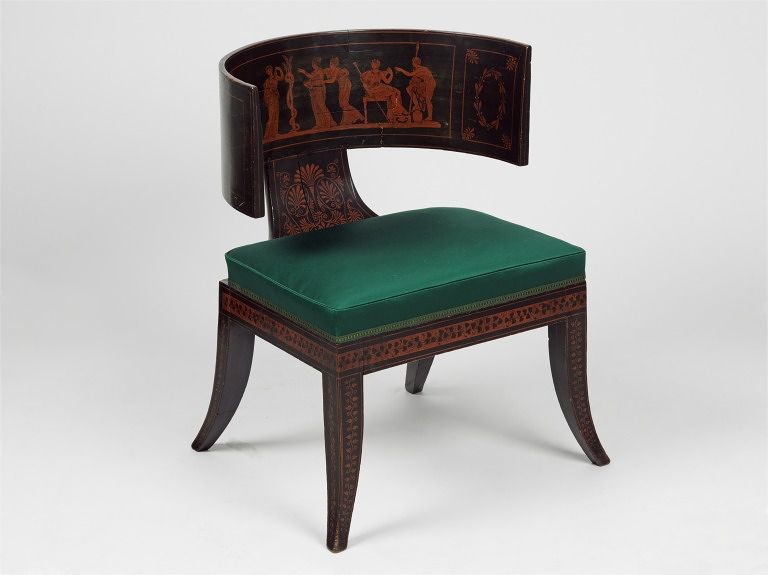
A chair from the Victoria and Albert museum collection.
Image courtesy of the V&A Museum.
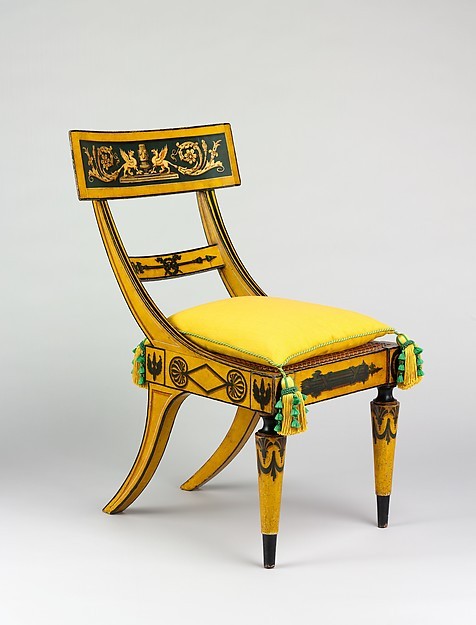
This chair was made in the USA during 1815-1820 out of maple, gilding, paint and cane.
Image courtesy of the Met Museum.
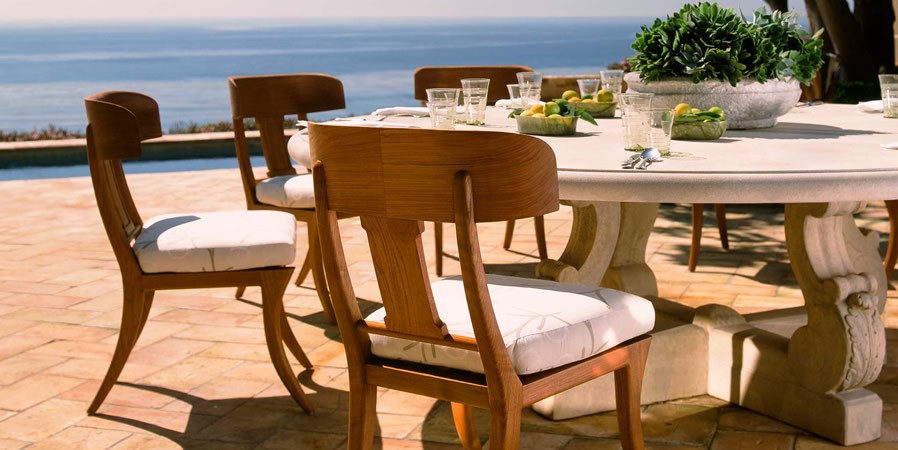
A modern chair for outdoor dining.
Image courtesy of Michael Taylor.
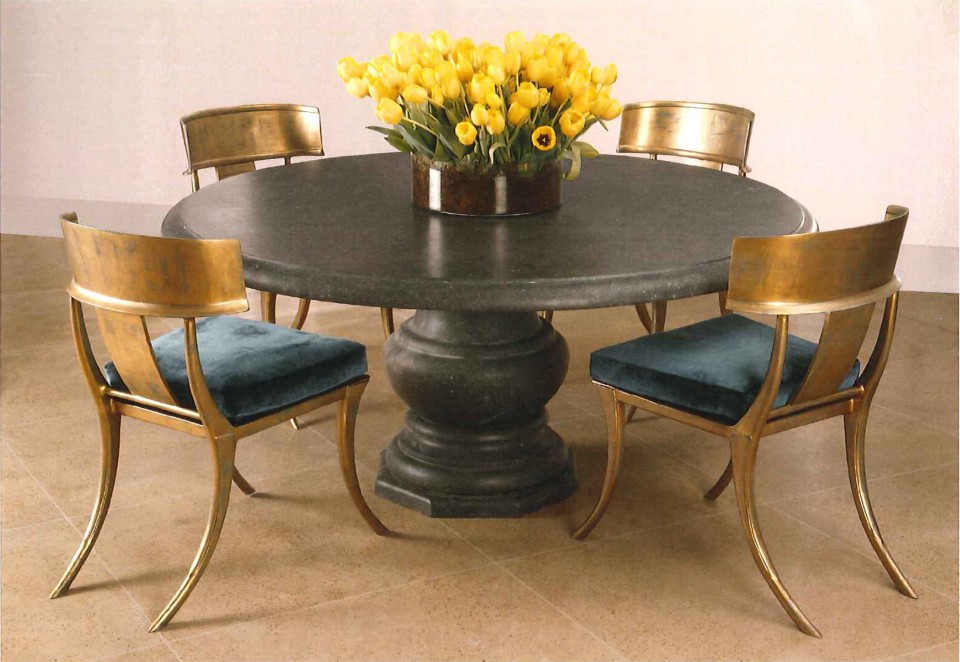
Image courtesy of Michael Taylor.
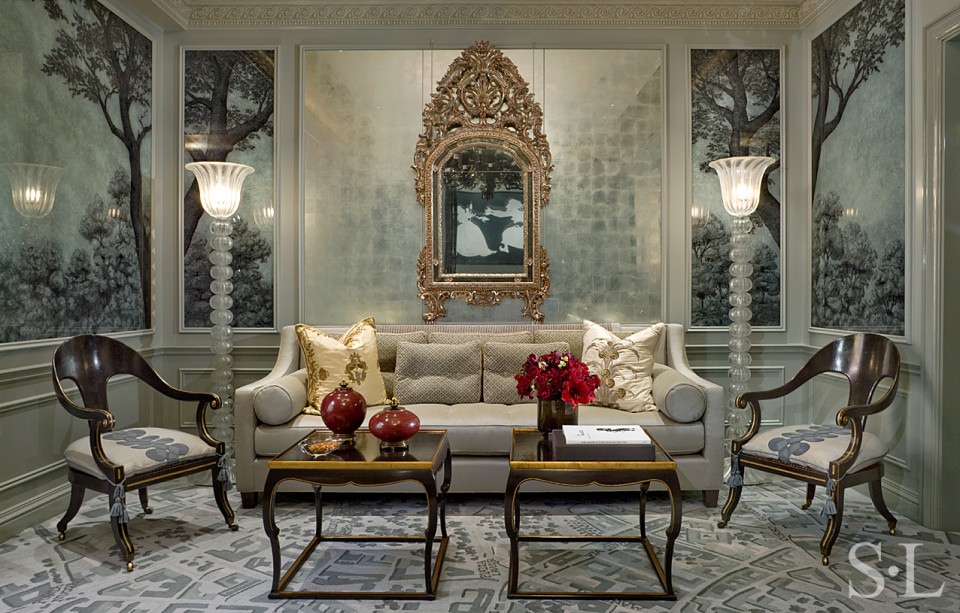
Image from an SLI project titled Lady’s Suite. The pair of ebonized Roman spoon back Klismos chairs are English, c. 1808. Click here for more images of this residence.
